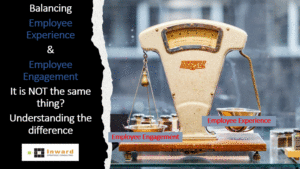In the world of enterprise and strategic consulting, the concept of surrendering often carries a negative connotation. It’s seen as a signal of a weak point, defeat, or a loss of willpower. However, a deeper examination reveals that surrendering may be a strategic necessity. This is a calculated decision that leads to success rather than failure.
Surrendering within the commercial enterprise context doesn’t mean giving up on your goals or admitting defeat. Instead, it involves a careful assessment of your current scenario, resources, and objectives. It’s about spotting when to let go of a specific method, undertaking, or mindset that is no longer serving your long-term interests.
One of the important principles in strategic consulting is “Adaptability”. The enterprise landscape is constantly evolving. What worked yesterday may not work tomorrow. Surrendering, in this sense, is the capability to pivot, shift your awareness, and reallocate resources to regions that promise a better return on funding and market acceptance.
Consider a company like Kodak. This is a well-known organization that has manufactured camera film for many years. With the rise of digital cameras and smartphones equipped with good-quality cameras, their market proportion has started to dwindle.
- Surrendering, in this case, means acknowledging that the conventional film and camera market is shrinking and figuring out to invest in new technology or services, which includes motion photograph movie production, substances, and chemicals. By surrendering the old model, the company can adapt to the changing market and continue to thrive.
- Furthermore, surrendering can also apply to interpersonal dynamics within an organization. Leaders often encounter resistance to change, and they may perceive surrendering to employee feedback or dissenting opinions as a loss of authority. However, surrendering to constructive criticism and diverse viewpoints can lead to better decision-making and a more engaged workforce.
- Moreover, surrendering can be a powerful tool in negotiations and partnerships. It doesn’t constantly mean giving in completely but can contain making concessions to build trust and create mutually beneficial effects. In strategic consulting, it is often emphasized that a win-win situation is more sustainable in the long run than a win-lose situation.
Here are a few real company examples where surrendering certain strategies or aspects of their business helped them ultimately win in the long run:
- Netflix: In its early years, Netflix become primarily a DVD rental-by-mail service. However, with the rise of virtual streaming and the decline of physical media, they realized they needed to pivot. Netflix surrendered its DVD enterprise and centered on streaming content. This strategic shift turned the company into one of the global leading streaming systems.
- IBM: In the early 2000s, IBM identified that its conventional hardware business was declining in profitability. Instead of clinging to it, they surrendered their PC and server hardware businesses, specializing in high-margin software and services. This small move transformed IBM into a leading technology and consulting services company.
- Adobe Systems: Adobe was a pioneer computer software company. The agency is known for offering programs like desktop software for design, animation software, and so forth. However, because the software enterprise shifted toward subscription-based models and cloud services, Adobe recognized the need to surrender its traditional software program sales model. They efficiently transitioned to Adobe Creative Cloud, a subscription-based service. This ensures a consistent move of revenue and long-term customer relationships.
- Starbucks: In 2008, during the global financial disaster, Starbucks faced declining sales and overexpansion. To win back customers and regain profitability, Starbucks surrendered its growth-at-all-expenses approach, closing hundreds of underperforming shops and reevaluating its menu. This strategic move helped them refocus on middle markets and maintain their brand’s value.
In each of those cases, surrendering certain aspects of their commercial enterprise or adapting to changing market situations allowed these companies to thrive in the long term. These strategic decisions were made with a forward-looking perspective, spotting that clinging to the past would have resulted in greater losses. Surrendering can certainly be a direction to prevailing in the ever-evolving world of enterprise.
It is all about having an “Embracing Change” mindset. Surrendering can also be a way to manage risk. In investment and financial planning, for instance, knowing when to reduce your losses is a vital skill.
Holding onto a failing investment out of pride or fear of admitting defeat can lead to extensive financial losses. Surrendering, in this context, means having the subject to exit an investment when it no longer aligns together with your financial goals.
To finish, surrendering isn’t synonymous with losing in the world of enterprise and strategic consulting. Instead, it’s a strategic maneuver. It requires foresight, adaptability, and the willingness to reassess your goals. It’s about spotting when the old ways no longer serve your interests and having the courage to explore new possibilities. Surrendering can lead to growth, innovation, and in the end, long-term achievement.
So, the next time you face a situation in which surrendering seems like the only choice, remember that it might just be the strategic move that propels you forward.

































